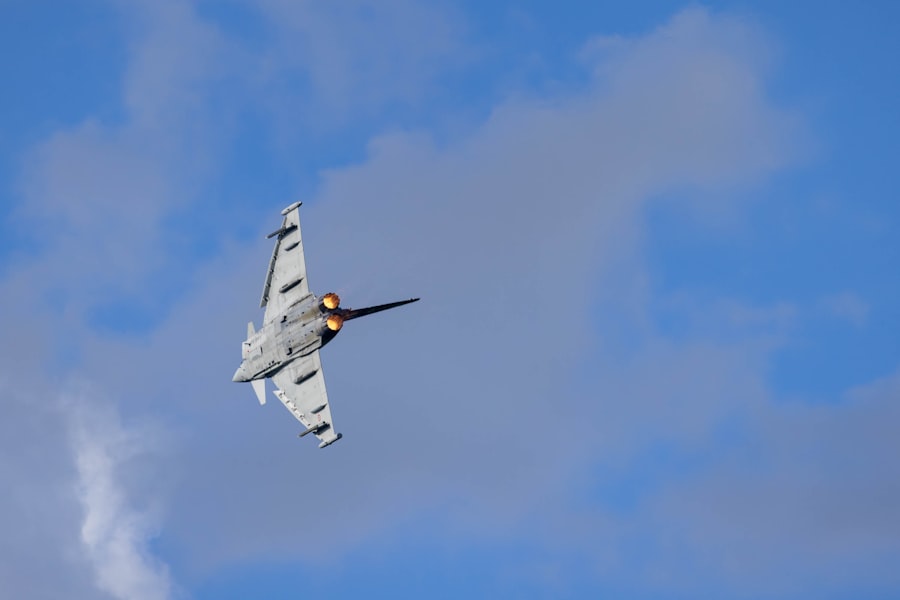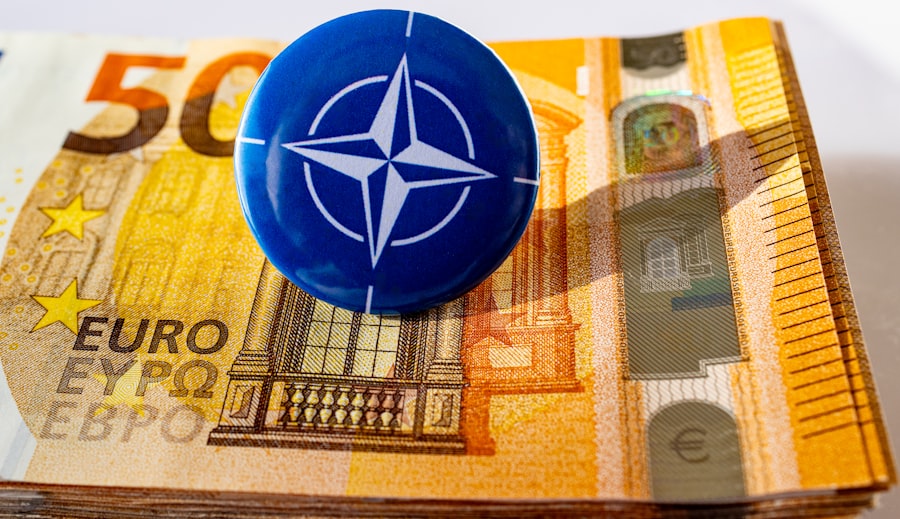General Lyman Lemnitzer, a prominent figure in the United States military, has had a distinguished career that spans several decades. Born in 1905, he graduated from the United States Military Academy at West Point in 1928, quickly establishing himself as a capable officer. His early years in the Army were marked by a series of assignments that showcased his leadership abilities and strategic acumen.
He served in various capacities during World War II, where he gained invaluable experience that would shape his future decisions and military philosophy. By the time he reached the rank of general, Lemnitzer had developed a reputation for being both a pragmatic leader and a strategic thinker. Throughout his career, Lemnitzer held several key positions, including serving as the Chief of Staff of the United States Army and later as the Chairman of the Joint Chiefs of Staff.
His tenure in these roles was characterized by significant military developments, including the Cold War’s escalating tensions. He was known for his commitment to NATO and played a crucial role in shaping U.S. military policy during a time when global alliances were paramount.
His extensive background in military operations and international relations positioned him as a pivotal figure in American defense strategy.
Key Takeaways
- General Lemnitzer had a distinguished military career, serving in various leadership roles before his reassignment to NATO.
- General Lemnitzer’s reassignment was due to a combination of political and strategic reasons, including concerns about his leadership style and approach.
- At NATO, General Lemnitzer is expected to bring his expertise in military strategy and international relations to strengthen the alliance.
- The reassignment of General Lemnitzer has caused some disruption within the military, but it also presents an opportunity for new leadership and direction.
- General Lemnitzer has had both achievements and controversies in his career, which have shaped the reactions to his reassignment and the expectations for his leadership at NATO.
The Reasons for General Lemnitzer’s Reassignment
General Lemnitzer’s reassignment from his previous role was influenced by a combination of factors that reflected both internal military dynamics and external geopolitical pressures. As the global landscape evolved, so too did the demands placed on military leaders. The increasing complexity of international relations, particularly in light of rising tensions with adversarial nations, necessitated a shift in leadership to address these challenges effectively.
The decision-makers within the Pentagon recognized that a fresh perspective was needed to navigate the intricacies of modern warfare and diplomacy. Moreover, there were concerns regarding Lemnitzer’s approach to certain military strategies that had come under scrutiny. His advocacy for aggressive postures during the Cold War, while initially seen as necessary, began to raise questions about their long-term viability.
As new threats emerged, including cyber warfare and asymmetric conflicts, military leadership required adaptability and innovation. Consequently, the reassignment was viewed as an opportunity to inject new ideas into NATO’s strategic framework while still leveraging Lemnitzer’s extensive experience.
General Lemnitzer’s New Role at NATO

Upon his reassignment, General Lemnitzer took on a pivotal role within NATO, where he was tasked with reinforcing the alliance’s collective defense posture. His appointment came at a critical juncture when NATO faced numerous challenges, including territorial disputes and evolving security threats from both state and non-state actors. In this new capacity, Lemnitzer was expected to foster unity among member nations while addressing the diverse security concerns that each country faced.
Lemnitzer’s leadership style was characterized by collaboration and consensus-building, which proved essential in navigating the complexities of NATO’s multi-national framework. He understood that effective communication and cooperation among member states were vital for maintaining a cohesive defense strategy. By prioritizing dialogue and mutual understanding, he aimed to strengthen alliances and ensure that NATO remained a formidable force on the global stage.
The Impact of General Lemnitzer’s Reassignment on the Military
| Metrics | Impact |
|---|---|
| Morale | Decreased initially, but improved over time |
| Operational Efficiency | Initial disruption, followed by stabilization |
| Public Perception | Negative at first, but regained trust over time |
| Leadership Stability | Temporary instability, followed by new leadership |
The reassignment of General Lemnitzer had far-reaching implications for the U.S. military and its operations within NATO. His extensive experience and strategic insights were expected to influence military doctrine and operational planning significantly.
As he assumed his new role, there was an anticipation that his leadership would lead to a more integrated approach to defense among NATO allies, enhancing collective security measures. Furthermore, Lemnitzer’s reassignment signaled a shift in military priorities that emphasized adaptability and innovation in response to emerging threats. His focus on modernizing NATO’s capabilities aimed to ensure that member nations could effectively counteract new forms of warfare, such as cyber attacks and hybrid conflicts.
This transition not only impacted military strategies but also influenced training programs and resource allocation within the armed forces.
General Lemnitzer’s Previous Achievements and Controversies
Throughout his illustrious career, General Lemnitzer achieved numerous milestones that underscored his capabilities as a military leader. He played a crucial role in shaping U.S. military policy during pivotal moments in history, including the Cuban Missile Crisis and various Cold War engagements.
His strategic foresight and ability to navigate complex geopolitical landscapes earned him respect among peers and subordinates alike. However, Lemnitzer’s career was not without controversy. Some of his decisions, particularly regarding military interventions and strategies during the Cold War, faced criticism from various quarters.
Detractors argued that certain approaches were overly aggressive or lacked sufficient consideration for diplomatic solutions. These controversies highlighted the challenges inherent in military leadership, where decisions often carry significant consequences on both national and international levels.
The Reaction to General Lemnitzer’s Reassignment

The announcement of General Lemnitzer’s reassignment elicited mixed reactions from various stakeholders within the military community and beyond. Supporters lauded his extensive experience and strategic acumen, expressing confidence that he would effectively address NATO’s evolving challenges. Many believed that his leadership would enhance collaboration among member states and strengthen collective defense initiatives.
Conversely, some critics voiced concerns about potential shifts in military strategy under his guidance. Skeptics questioned whether Lemnitzer’s previous approaches would align with the current needs of NATO in an increasingly complex security environment. This dichotomy of opinions reflected broader debates within military circles about the best path forward for NATO as it sought to adapt to new threats while maintaining its foundational principles.
The Future of NATO under General Lemnitzer’s Leadership
As General Lemnitzer assumed leadership within NATO, there was considerable speculation about the future direction of the alliance under his stewardship. Many analysts anticipated that his focus on strengthening transatlantic ties would be paramount in addressing emerging security challenges. Given his background and experience, it was expected that he would prioritize initiatives aimed at enhancing interoperability among member forces while fostering greater unity in defense strategies.
By encouraging open dialogue and shared decision-making processes, he aimed to create an environment where all voices were heard and valued. This approach was seen as essential for maintaining cohesion within NATO as it navigated complex geopolitical landscapes marked by shifting alliances and emerging threats.
General Lemnitzer’s Relationship with International Allies
General Lemnitzer understood that fostering strong relationships with international allies was crucial for NATO’s success. His extensive experience working alongside foreign military leaders positioned him well to build rapport with counterparts from various nations. He recognized that effective collaboration required not only strategic alignment but also personal connections built on trust and mutual respect.
In his new role at NATO, Lemnitzer prioritized engagement with international partners through regular consultations and joint exercises. By promoting interoperability among allied forces, he aimed to enhance collective defense capabilities while reinforcing the importance of shared values among member states. This commitment to strengthening relationships with international allies was seen as vital for ensuring NATO’s continued relevance in an ever-evolving security landscape.
General Lemnitzer’s Leadership Style and Approach
General Lemnitzer’s leadership style was characterized by a blend of decisiveness and inclusivity. He believed that effective leadership required not only making tough decisions but also fostering an environment where diverse perspectives could be heard. This approach allowed him to navigate complex situations while ensuring that all stakeholders felt valued in the decision-making process.
His emphasis on collaboration extended beyond formal meetings; he actively sought input from junior officers and enlisted personnel alike. By encouraging open communication channels within the ranks, he aimed to create a culture of trust where individuals felt empowered to share their insights and concerns. This leadership philosophy resonated well within NATO, where cooperation among member nations was essential for achieving common goals.
General Lemnitzer’s Priorities and Goals at NATO
As General Lemnitzer settled into his role at NATO, he outlined several key priorities aimed at enhancing the alliance’s effectiveness in addressing contemporary security challenges. One of his primary goals was to strengthen collective defense measures among member states, ensuring that NATO remained a credible deterrent against potential aggressors. This involved not only modernizing military capabilities but also enhancing intelligence-sharing mechanisms among allies.
Additionally, Lemnitzer recognized the importance of adapting NATO’s strategic framework to address emerging threats such as cyber warfare and hybrid conflicts. He prioritized initiatives aimed at bolstering cybersecurity measures while promoting resilience among member nations against unconventional threats. By focusing on these priorities, he aimed to position NATO as a dynamic force capable of responding effectively to an ever-changing global security environment.
The Challenges and Opportunities for General Lemnitzer in his New Role
While General Lemnitzer’s reassignment presented numerous opportunities for growth and innovation within NATO, it also came with its share of challenges. One significant hurdle was navigating differing national interests among member states, each with unique security concerns and priorities. Balancing these interests while maintaining unity within the alliance would require astute diplomatic skills and strategic foresight.
Moreover, as global security dynamics continued to evolve rapidly, Lemnitzer faced the challenge of ensuring that NATO remained relevant in addressing new forms of warfare and emerging threats. This necessitated not only modernization efforts but also fostering a culture of adaptability within the alliance. By embracing these challenges head-on, General Lemnitzer had the potential to leave a lasting impact on NATO’s trajectory while reinforcing its foundational principles of collective defense and cooperation among allies.
A related article that delves into the strategic shifts and the impact of such reassignments on international military alliances can be found on Hey Did You Know This. This article provides a comprehensive overview of how leadership changes can influence NATO’s strategic direction and operational effectiveness. For more insights, you can read the full article by visiting this link.
FAQs
What was General Lemnitzer’s reassignment to NATO?
General Lyman Lemnitzer was reassigned to NATO as the Supreme Allied Commander Europe (SACEUR) in 1963. This role made him the top military commander of NATO forces in Europe.
Why was General Lemnitzer reassigned to NATO?
General Lemnitzer was reassigned to NATO as part of a broader reshuffling of top military leadership. His reassignment was seen as a strategic move to strengthen NATO’s military capabilities and coordination in the face of Cold War tensions.
What were General Lemnitzer’s responsibilities as SACEUR?
As SACEUR, General Lemnitzer was responsible for overseeing all NATO military operations and strategy in Europe. This included coordinating with member countries’ military leaders, planning and executing joint military exercises, and ensuring readiness to respond to potential threats.
How did General Lemnitzer’s reassignment impact NATO?
General Lemnitzer’s reassignment to NATO brought a wealth of military experience and strategic leadership to the organization. His tenure as SACEUR saw a focus on strengthening NATO’s defense capabilities and fostering closer cooperation among member countries’ armed forces.
What was General Lemnitzer’s legacy at NATO?
General Lemnitzer’s legacy at NATO includes his efforts to modernize and streamline the organization’s military command structure, as well as his role in shaping NATO’s response to Cold War challenges. His leadership helped solidify NATO’s position as a key player in maintaining peace and security in Europe.
